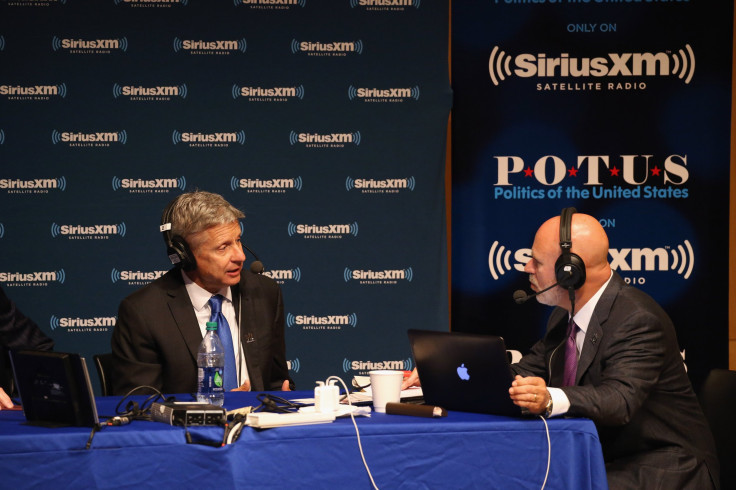How Many People Are Running For President? Full List Shows A Lot More Than Just Hillary Clinton, Donald Trump And Gary Johnson

The upcoming presidential election seems certain to be won by either Democrat Hillary Clinton or Republican Donald Trump, but there are several other hopefuls in the race accounting for, say, five percent of the vote in the general election and potentially enough to impact the decision. There are roughly 26 candidates running for president, though many are not on most state ballots or any ballot.
In 2012, 27 candidates were on the ballot in at least one state. President Barack Obama and Republican nominee Mitt Romney totaled 126,849,296 votes, while all the other candidates added up to 2,236,107 votes, or 1.74 percent. Obama won in electoral-college landslide, 332-206, and defeated Romney by over 5 million votes. Even if Romney had captured all of the votes that went to third-party candidates, he still would have come up short in tight states.
But this election cycle may be different, as both Clinton and Trump suffer from unusually high unfavorable ratings. Perhaps as a result, Libertarian nominee Gary Johnson and Green Party nominee Jill Stein have seen an uptick in the polls after poor showings in 2012. In 2000, many believed left-wing politician Ralph Nader, who at the time was a member of the Green Party, tipped the election towards Bush by siphoning votes from key swing states with 2,882,955 votes, or 2.74 percent of the vote.
The long list of candidates can be aggravating for Democrats and Republicans, as party leaders desperately court as many undecided voters as possible. Presidential candidates with little chance of winning can also paint an unfavorable picture of a viable candidate.
In 2000, Lyndon LaRouche supporters were seen canvassing on college campuses in direct opposition to Democratic nominee Al Gore, and waged a campaign against President Obama in 2008. One sign read “The Pure Evil of Al Gore” and another had drawn an Adolf Hitler mustache on Obama's picture. LaRouche’s “Worldwide LaRouche Youth Movement” has been described as a cult by some former members, and his total votes in the general election lagged behind at least seven other candidates in 2000.
Here are some of the notable candidates running for president against Clinton and Trump.
Gary Johnson, Libertarian
The former governor of New Mexico from 1995 to 2003 was once a Republican. The former construction company owner received just 1,275,951 votes (0.99 percent) in 2012, but has looked stronger in the polls, polling as high as 13 percent in July. Johnson may have stronger mainstream appeal this time around by running with Bill Weld, the former Republican governor of Massachusetts. Johnson is on the ballot for all 50 states and has received an increase in media attention, perhaps due to Trump's nontraditional campaign rhetoric.
Jill Stein, Green
The Harvard grad and medical doctor fared worse than Johnson in 2012, receiving just 469,628 votes (0.36 percent). But it’s unclear if she can effectively capture dissatisfied liberal voters considering how currently close the race is between Clinton and Trump and with many voters remembering Nader's role as the perceived "spoiler" for Gore. Stein is on the ballot in 45 states and the District of Columbia.
Darrell Castle, Constitution
The Tennessee attorney had previously backed out of running due to health concerns, but later re-entered the race. Castle has conservative political views, and this is his first time running for president. In 2012, Constitution candidate Virgil Goode received 122,388 votes (0.09 percent).
Gloria La Riva, Peace and Freedom/Socialism and Liberation
Formerly the candidate for the Workers World Party, Riva follows Nader, who served as the nominee in 2008, and comedian Roseanne Barr in 2012 with the Peace and Freedom Party. Riva, a socialist who serves as a San Francisco community activist, is on the ballot in eight states. Barr received 67,326 votes (0.05 percent).
Evan McMullin, Independent
Part of the #NeverTrump movement, McMullin is a Republican write-in candidate and a former senior adviser on national security issues. He is part of The Church of Jesus Christ of Latter-day Saints, and is drawing strong voter support in Utah.
Tom Hoefling, America’s
The founder and chairman of the party ran in a failed bid to win the Republican Iowa gubernatorial nomination in 2014. Hoefling received 40,628 votes (0.03 percent) in 2012. Former Republican presidential candidate Alan Keyes was previously aligned with this conservative party.
Rocky De La Fuente, Reform
The Southern Californian car dealership owner previously ran as a progressive Democrat, and has comprehensive stances on many issues. The Reform party has shifted its platform over the years, after being founded by Ross Perot in 1995. Andre Barnett, was the Reform Party’s candidate in 2012, and later sought a House seat as a Republican in 2014.
Other
This category did better than many of the aforementioned parties combined with 217,148 votes. Write-in candidates this year include comedian Ron White, pastor Terry Jones, and football coach Robby Wells.
The list of ballot candidates include Monica Moorehead (Socialist Party USA), James Hedges (Prohibition), Farley Anderson (Independent American), Chris Keniston (Veterans Party of America), Peter Skewes (American Party – South Carolina), Mike Maturen (American Solidarity), Rod Silva (Nutrition), and Jerry White (Socialist). Non-ballot candidates also include Dan Bilzerian, Ken Fields, Zoltan Istvan, Merlin Miller, Joe Schriner, and Guy Schwartz.
© Copyright IBTimes 2024. All rights reserved.






















